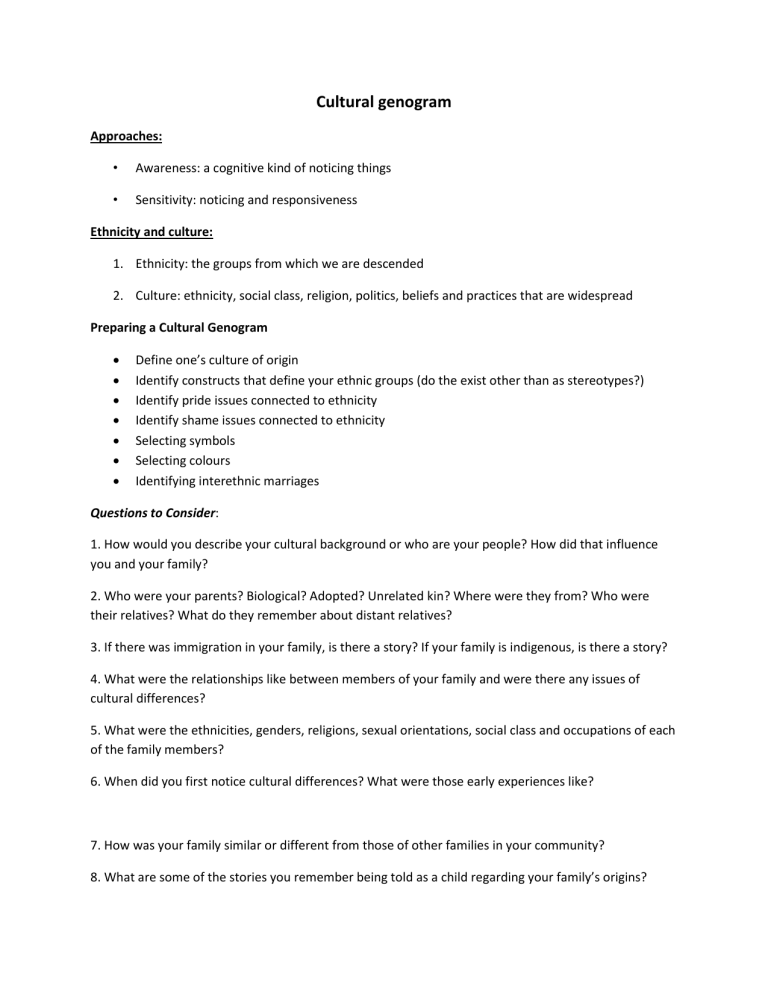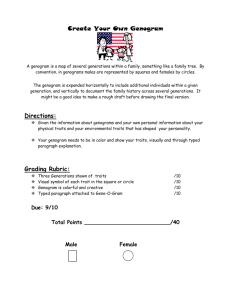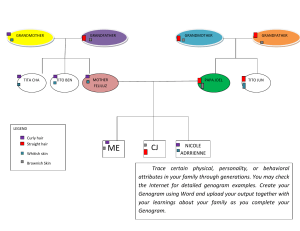
Cultural genogram Approaches: • Awareness: a cognitive kind of noticing things • Sensitivity: noticing and responsiveness Ethnicity and culture: 1. Ethnicity: the groups from which we are descended 2. Culture: ethnicity, social class, religion, politics, beliefs and practices that are widespread Preparing a Cultural Genogram Define one’s culture of origin Identify constructs that define your ethnic groups (do the exist other than as stereotypes?) Identify pride issues connected to ethnicity Identify shame issues connected to ethnicity Selecting symbols Selecting colours Identifying interethnic marriages Questions to Consider: 1. How would you describe your cultural background or who are your people? How did that influence you and your family? 2. Who were your parents? Biological? Adopted? Unrelated kin? Where were they from? Who were their relatives? What do they remember about distant relatives? 3. If there was immigration in your family, is there a story? If your family is indigenous, is there a story? 4. What were the relationships like between members of your family and were there any issues of cultural differences? 5. What were the ethnicities, genders, religions, sexual orientations, social class and occupations of each of the family members? 6. When did you first notice cultural differences? What were those early experiences like? 7. How was your family similar or different from those of other families in your community? 8. What are some of the stories you remember being told as a child regarding your family’s origins? 9. Did your family talk about cultural differences? Putting it together 1. Create a cultural framework story for your family(one background paragraph) 2. Construct a two-generation genogram 3. Write about you or another member of the genogram, guided by the following: • What was your childhood context: • Family (parents – heritages) /Other • Culture • Spirituality/Orientation to Life There are standard symbols for genograms. Examples of genograms and common notations/symbols are noted below. The following is an example of a genogram composite including family communication patterns. https://prezi.com/hbvlsdgrifrl/copy-of-cultural-genogram/ References Butler, J.F. (2008). The family diagram and genogram: Comparisons and contrasts. The American Journal of Family Therapy, 36, 169-180. Foster, Martha A., Gregory J. Jurkovic, Lisa G. Ferdinand & Lindi A. Meadows (2002). The impact of the genogram on couples: A manualized approach. The Family Journal: Counseling and therapy for couples and families. 10(1), 34-40. Gilgun, Jane F. (2014). Resilience is relational. Amazon. Hardy, K. & Laszloffy, T.A. (1995). The cultural genogram: Key to training culturally competent family therapists. Journal of Marital and Family Therapy, 21(3), 227-237



